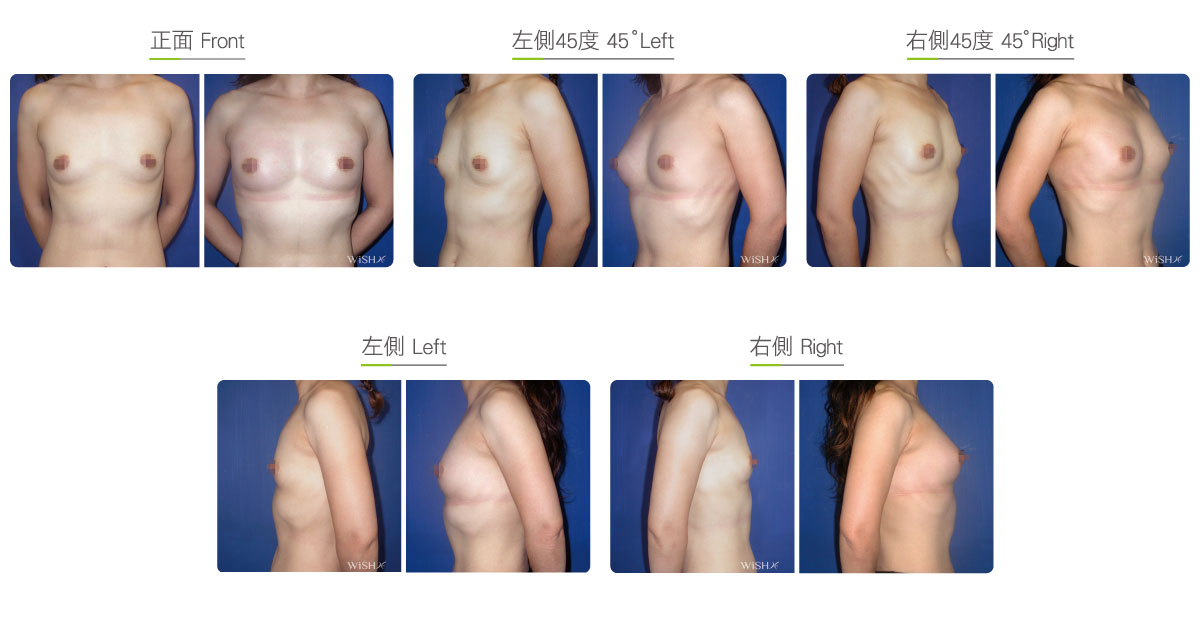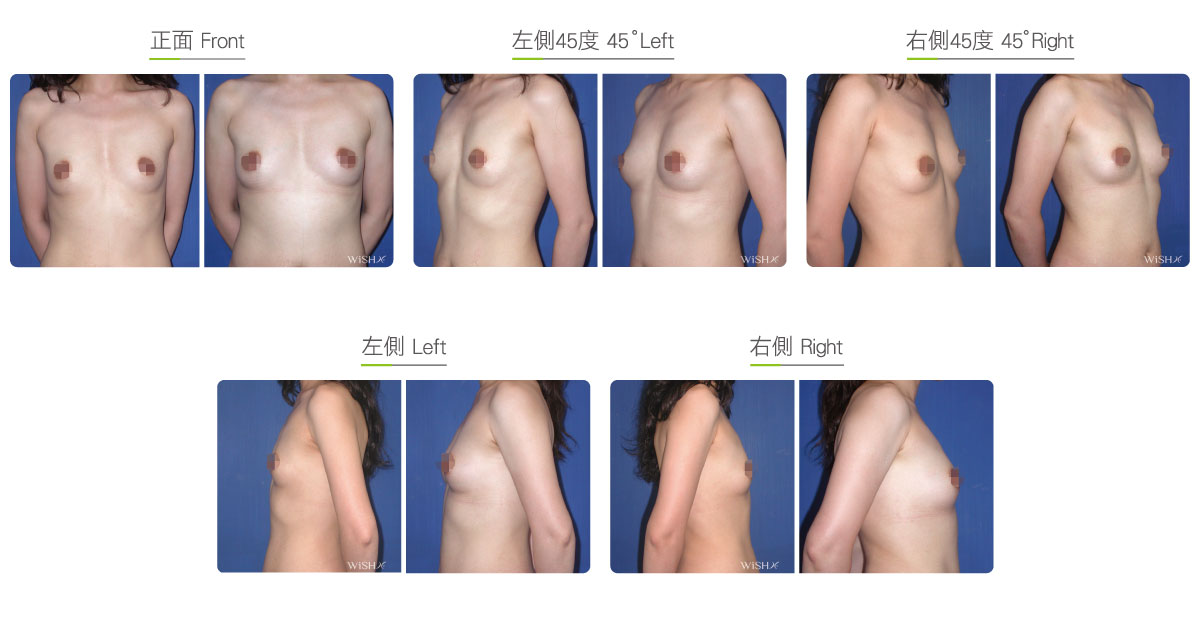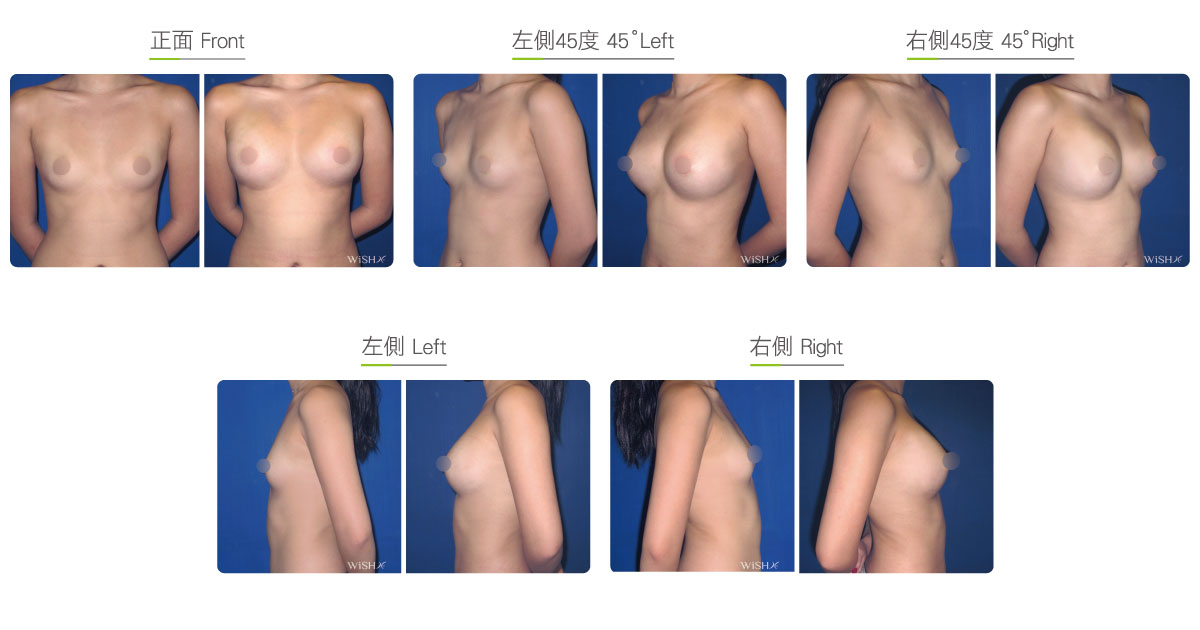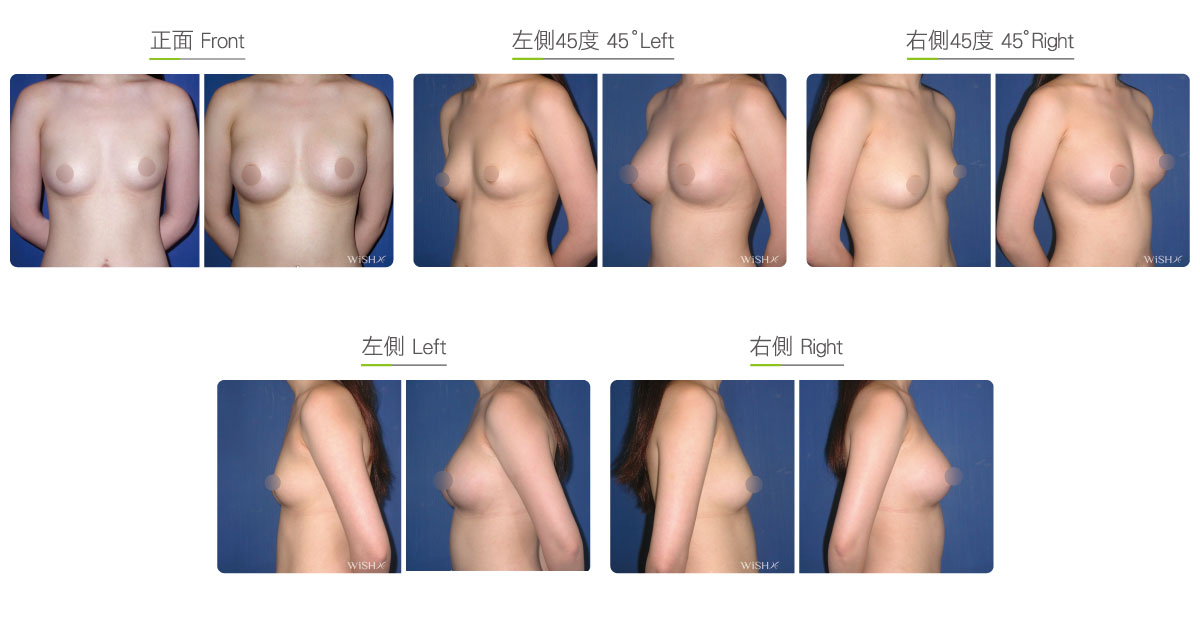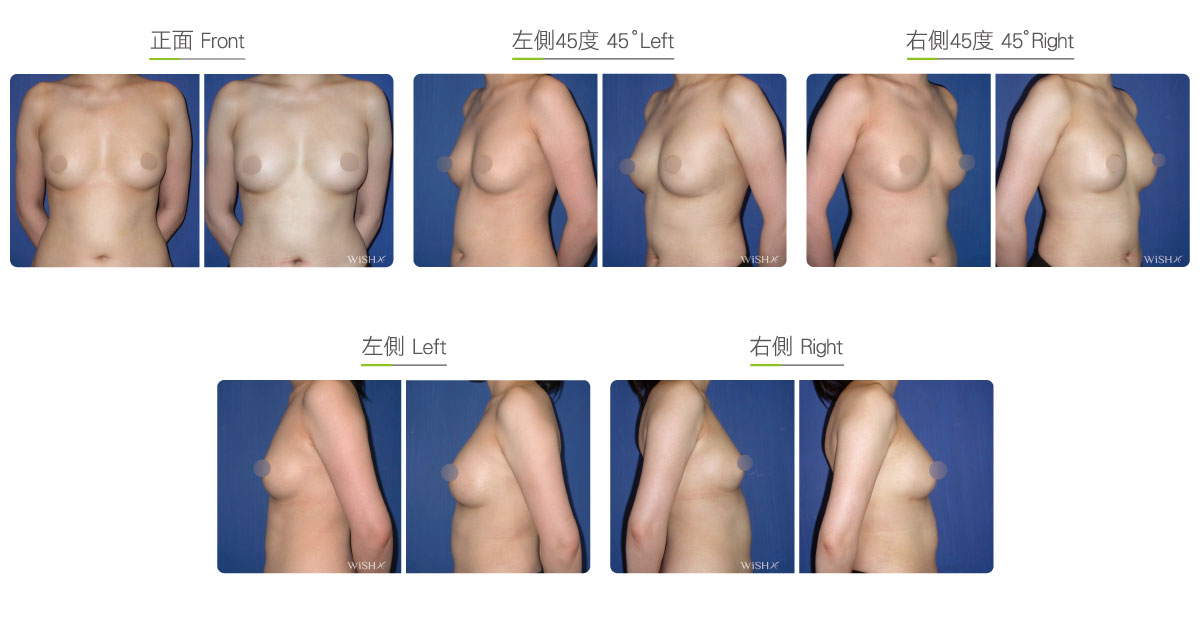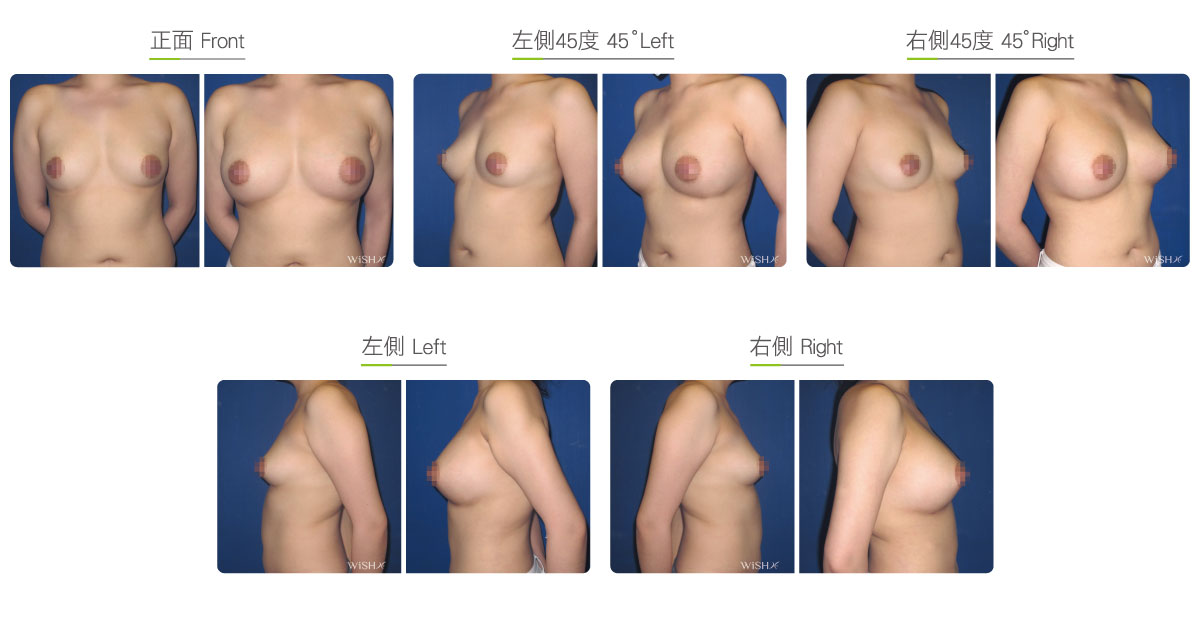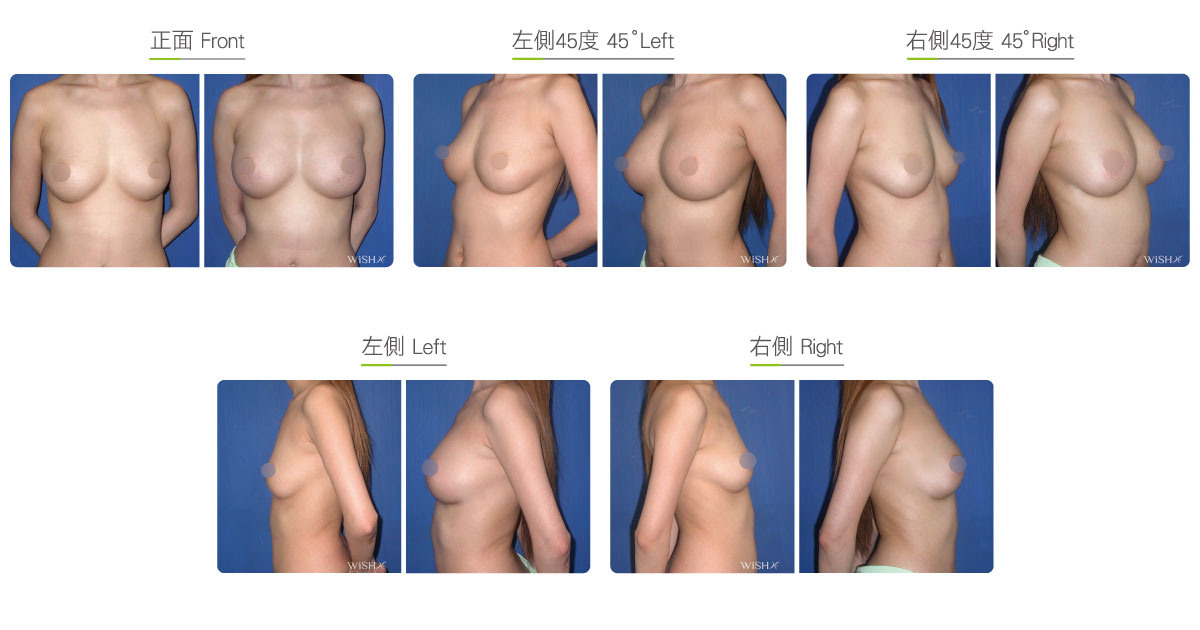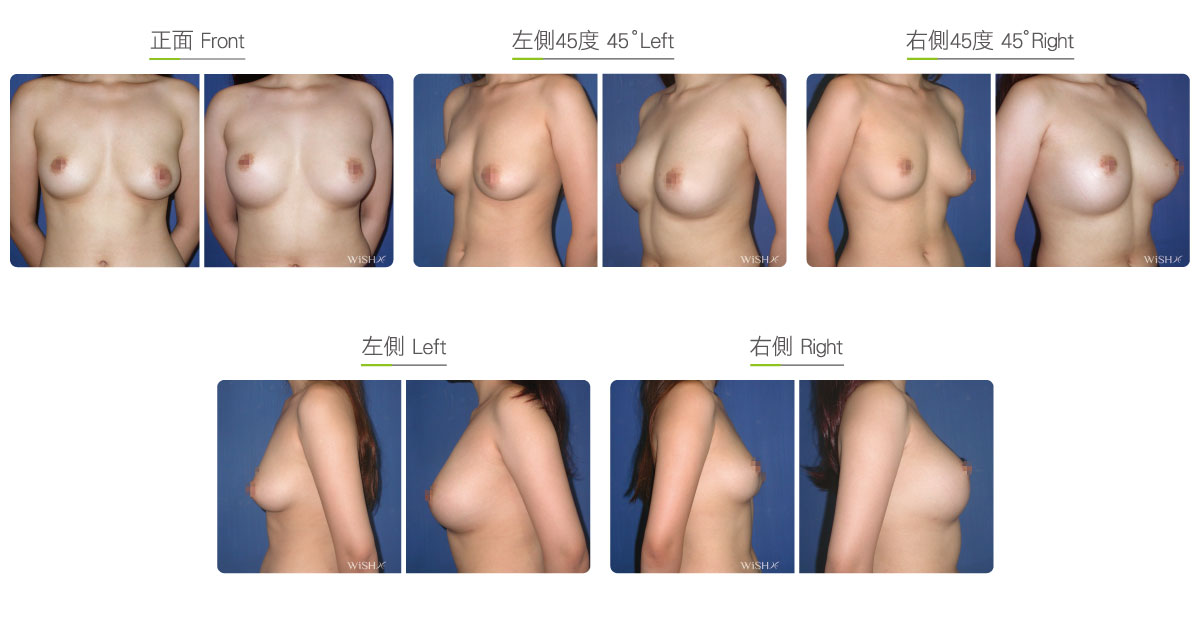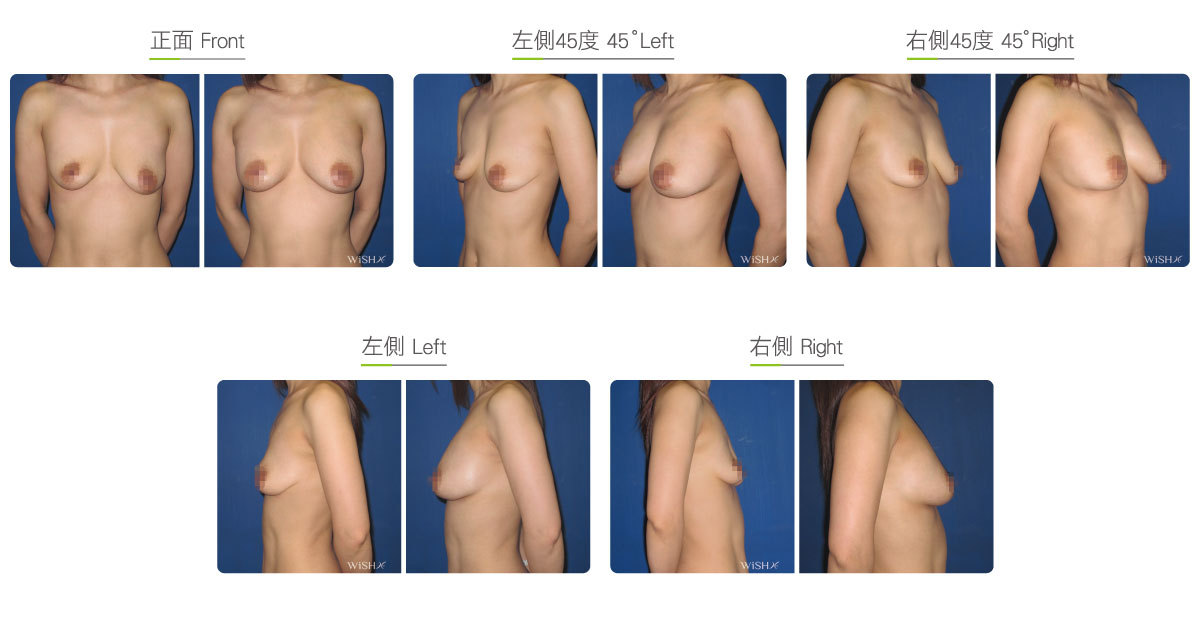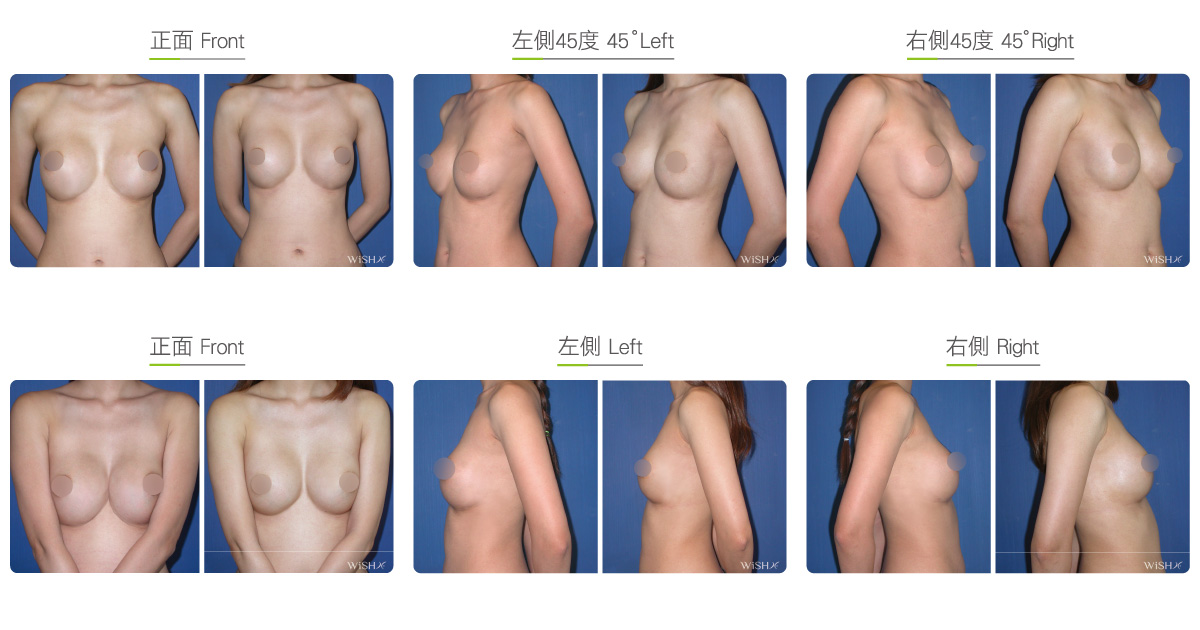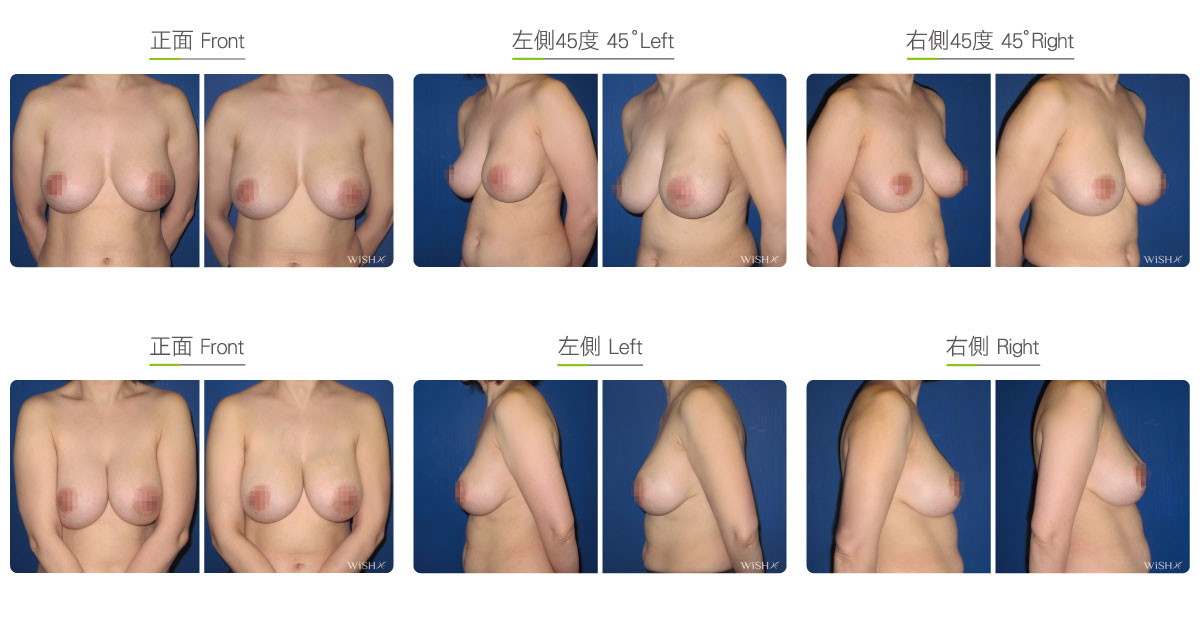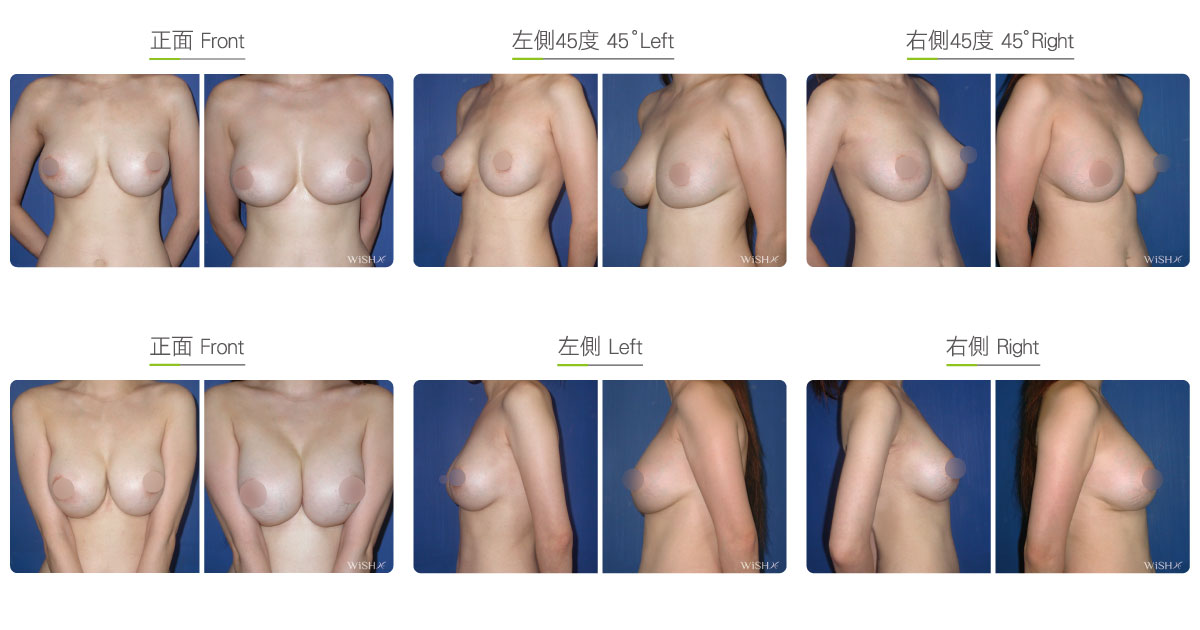Breast Augmentation
Autologous fat breast augmentation refers to the extraction of excess fats at other body parts and after processing, injecting them into the breasts to increase the cup size or adjust the breast shape, with the latter more significant as autologous fats are used to effectively redress the defects of breast shape. However, for increasing the cup size, results are usually not permanent, so patients should not take this as the primary or only objective of this surgery; otherwise, final results may fall short of the patient’s expectation. This surgery is conducted by harvesting necessary amounts of fats from body parts with relatively abundant amounts of adipose tissues, such as surplus fats at the abdomen, waist, buttocks, and thigh. The liposuction pressure should be lower in certain range to obtain complete adipose cells, which after filtrating for the highest-quality adipocytes by the puregraft closed collecting system are mixed with autologous growth factors, then injected into breast tissues. The stricter the extraction and selecting criteria are, the higher is the quality of adipocytes obtained. This not only elevates the adipocyte survival rate after injection into the breasts but also lowers the ratio of self-absorption and complication. Therefore, Dr. Chuang only preserves approximately one-third of the extracted fats on average for autologous fat breast augmentation. Besides the strict control in preparing fat cells, Dr. Chuang adopts the most advanced adipose-derived mesenchymal stem cell extraction method (stromal vascular fraction, SVF) to separate pre-adipocytes rich in stem cells, which are then mixed with adipocytes before injecting into the human body. The use of SVF to promote post-transplant regrowth and adipocyte activation is the so-called cell-assisted lipotransfer (CAL). At present, this method increases the adipocyte survival rate of autologous fat breast augmentation to over 60% and decreases the postoperative incidence of absorption or calcification, thus remarkably improving the safety and stability of the surgery.
The applications of autologous fats in breast plastic surgeries are quite extensive, and common indications are those willing to redress breast maldevelopment (flat breasts), increase their cup size, improve their postpartum breast atrophy, regionally ameliorate breast shape defects, correct uneven breasts, improve the side effects caused by emplaced breast prostheses like sense of touch, deformation, or rippling, or reconstruct the breasts been excised or implant removal. Since there are no special limitations or contraindications for this surgery, as long as patients are examined to confirm healthy breasts, sufficient body fats, a sound mind, and fully understand the surgical risks or complications, they may consider undergoing this surgery. Nevertheless, because the results of autologous fat breast augmentation are predominantly dependent on the quality and mass of liposuction, patients with a body weight of more than 45 kg, BMI of more than 19 kg/m2, or amount of fats removable from other body parts (such as the abdomen or thigh) of more than 1000 cc are indicated to undergo this surgery. Females who are too thin or with skinny body shapes cannot provide abundant fats for breast augmentation due to a very low amount of body fats, Dr. Chuang mostly recommends these patients to gain approximately 5–8 kg before scheduling the surgery; otherwise, a forced surgery not only results in unevenness or laxity of liposuction sites but also presents less than ideal results.
- Calculation in autologous fat breast augmentation:Fats to be collected for autologous fat breast augmentation are estimated by the following calculation.
Considering an increase of 1 cup size where each breast needs 120–150 cc of survived fats (both breasts need 240–300 cc) divided by a 30% loss and absorption rate under best conditions, at least 340–420 cc of purified fats is necessary for breast augmentation. Moreover, merely one-third of fats removed from other body parts are available for purification and injection after the removal of blood, fluids, and impurities. Likewise, at least 1000–1200 cc of fats should be collected from body to increase a cup size. For patients with a predisposition to absorption, more fats will be necessary to increase 1 cup size.
Calculation formula:
Amount of fats removed × 1/3 = Amount of fats for injection
Amounts of fats injected × 1/2 × 0.7= Optimal survival amount at each side (1200 cc or above increases 1 cup size)
- Surgical method: Currently, Dr. Chuang utilizes the Swiss made Medela Dominant 50 liposuction machine to collect intact adipocytes by low-pressure liposuction; fats are extracted and purified by the directly connected puregraft fat filtration system and then mixed with centrifuged body fluids and blood mesenchymal stem cells. This closed purification system not only avoids fat exposure to air resulting in necrosis or infection but also preserves the most intact adipocytes and high-concentration growth factors/stem cells to increase the survival rate of autologous fat breast augmentation and distinctly decrease complications such as breast calcification or lumps. Processed fats are then immediately evenly injected into the multiple sites such as subcutaneous, subglandular, and submuscular layers at micro-doses, with needles radially entering at different depths. Moreover, attention should be paid to avoid mammary tissue injections in case of postoperative lumping, cysts, or mastitis. In the last stage, Dr. Chuang fine-tunes the injection dose at both breasts to achieve symmetrical and larger breasts.
- Postoperative care: Compared with traditional breast augmentation, the postoperative care of autologous fat breast augmentation is much easier. Patients do not need to perform any breast massage but should try to avoid compression or squeezing of the breasts at the early stage to prevent disrupting the fat position and breast shape sculpted by the surgery. If cooperative, patients should try to stay in the prone position to prevent adipocytes from being compressed by skin tightness or an outer force. Moreover, applying an ice compress to the breasts is forbidden, and a warm compress can only be started after 2 weeks to stimulate fat fusion and dissolve swelling. Breast lumps are commonly temporary once if happened, and patients can perform a proper compression or massage after 1 month to facilitate lump metabolism. Even without any manipulation of breasts, the lumps commonly disappears within 6 months. The self-absorption of fats at the breasts would also stop at such a time.
- Factors that affect autologous adipocyte survival: The most difficult aspect of autologous fat breast augmentation to be evaluated is the adipocyte survival rate. For factors that affect fat absorption, besides the mixed application of stem cells and surgical method, smoking, staying up late, abstinence, weight loss, habitual hot baths, excess massage, jet lag, reversed workday and night, major disease, or even depression or mental diseases lowers the adipocyte survival rate. In other words, to attain more stable results, the patient must maintain a regular life, avoid drinking too much alcohol, maintain or even increase the body weight, or consume some high-calorie food after the operation such as eggs, meat, and gelatin, which prolong the results of fat breast augmentation.
Surgical conditions
Duration
- Type of anesthesia: General anesthesia
- Type of incision: A 2-mm needle hole at the lateral side of the inferior margin of the breast
Wound for the collection of adipose tissues (approximately 5 mm)
- Recovery: Within 2–3 days
- Removal of stitches: 5–7 days
General instructions
No food and water on the day of surgery
- Avoid lying in the prone position on sleeping or compression to the chest for 2 weeks postoperatively.
- Avoid excess cold or hot stimulus to the fat filling sites of the breasts for 2 weeks postoperatively.
- Avoid heavy squeezing or massaging the breasts for 1 month postoperatively.
- Avoid wearing very tight underwears for 3 months postoperatively to prevent the inhibition of adipocyte growth.
- Avoid a drastic loss of body weight for 6 months postoperatively and have more high-gelatin and high-calorie foods to promote fat survival.
Ideal candidates
- Patients willing to undergo liposuction of other body parts and concurrent breast augmentation
- Those in need of breast augmentation but unwilling to accept breast implants
- Those willing to increase only one cup size in a single surgery
- Those in need of breast augmentation but aspiring a real feel
- Those with congenitally uneven breasts willing to redress such an asymmetry
- Those with ptosis due to aging or breastfeeding who hope to adjust their breast shape
- Those with skin creases or touch disturbances due to a prior breast prosthesis emplacement
- Those with breast atrophy or depression due to the removal of breast prostheses
- Those willing to correct a congenital chest defect (such as a pigeon chest or funnel-shaped chest)
- Those with congenitally unilateral breast aplasia (Poland syndrome)
- Those willing to undergo reconstruction after partial or complete mastectomy
Possible complications
- Mammary gland inflammation (mastitis)
- Palpable lumps
- Fat calcification
- Fat cyst (necrosis)
- Excess absorption
- Uneven absorption
- Breastfeeding disorder
Surgical advantages
-
Because of the use of completely autologous fats, there is no foreign body reaction, infection, or capsular contracture caused by ptostheses.
-
Adipose cells from liposuction can be reused to achieve both body fats decrease and breast augmentation.
-
The touch is natural and soft, and therefore, there is no foreign body sense.
-
It fine-tunes the regional shape or size of the breasts.
-
Postoperative recovery is fast, and postoperative care such as breast massage is no more needed.
-
Postoperative pain is extremely low.
-
It can be repeated in the future.
Surgical drawbacks
-
The breast shape and size cannot be selected as freely as those in prosthesis emplacement.
-
There are no surplus fats available for liposuction in patients with very thin statures.
-
The breasts can only be augmented to a limited degree (1 cup on average).
-
Autologous fat absorption varies along with each individual, and results cannot be quantified.
-
The degree of autologous absorption may be uneven, and further or secondary surgery may be necessary.
-
Adipocytes may still gradually drain away, and long-term results are not as stable and long lasting as those obtained in prosthesis emplacement.
-
Excess injection may result in adipocyte calcification or lumping, thus affecting future breast examinations.
-
Patients with a history of breast multiple cysts or family history of breast cancer are not suitable.

